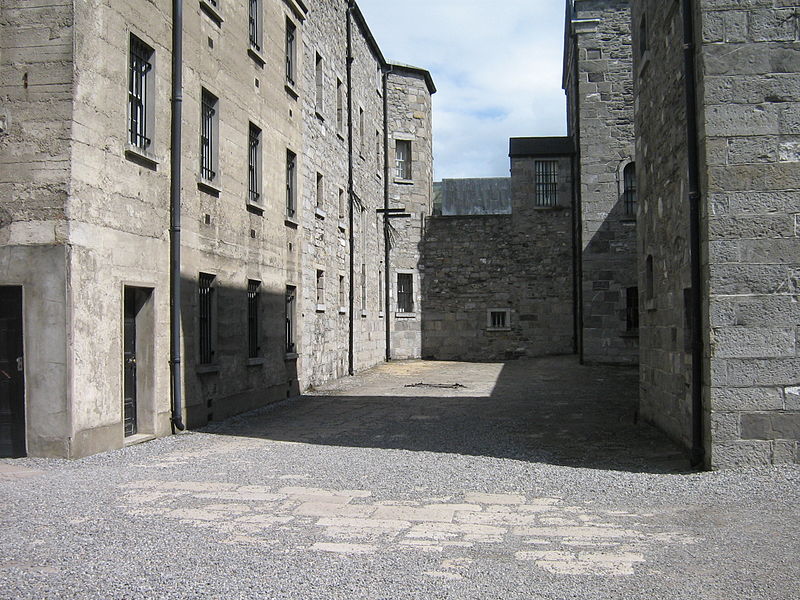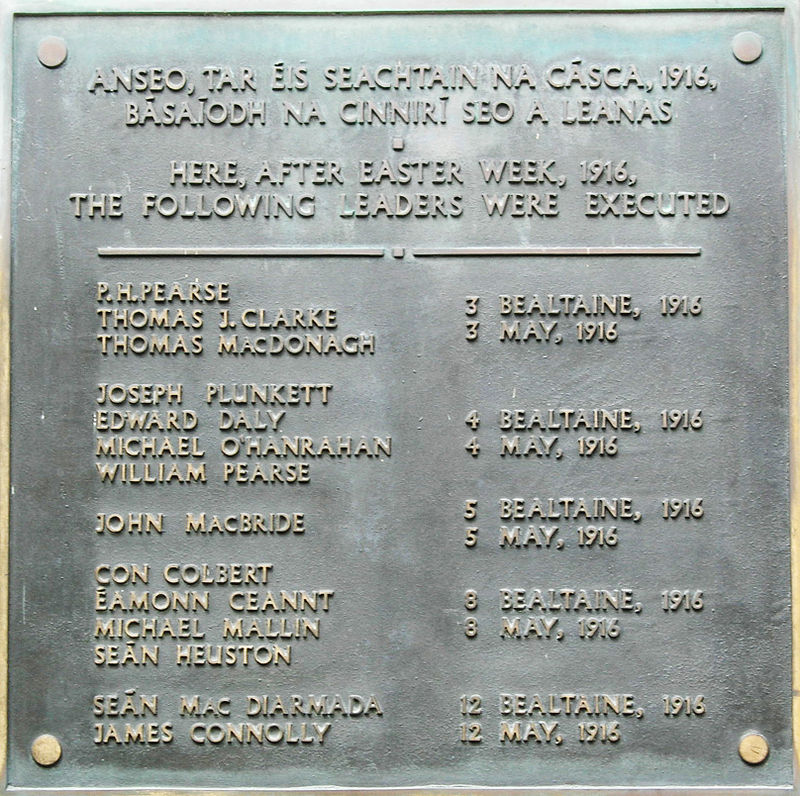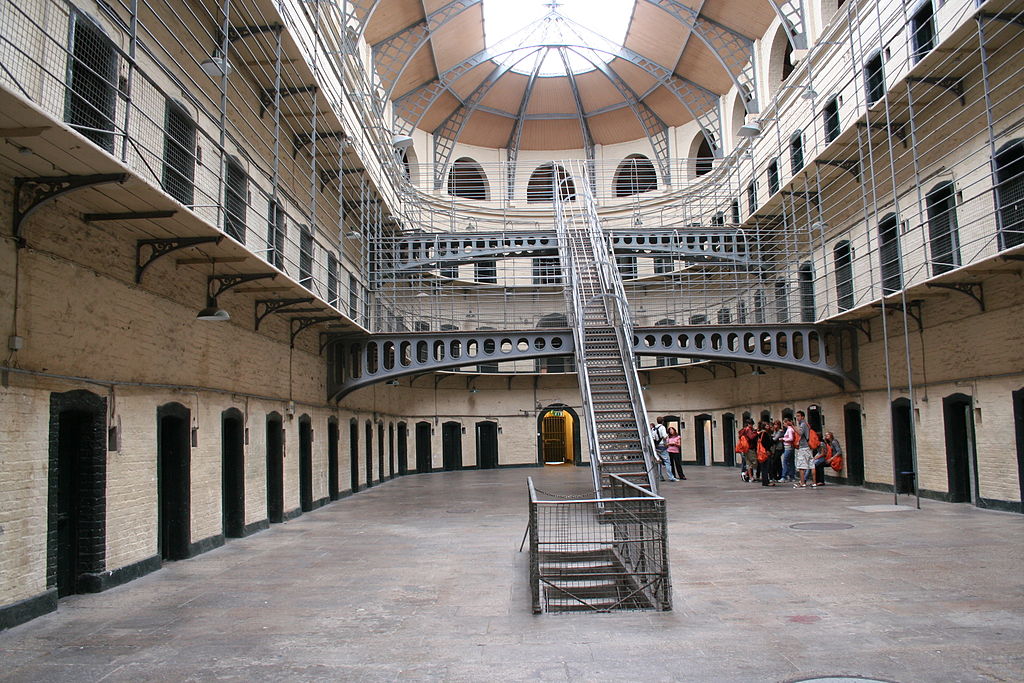Background
Also known as Kilmainham Gaol, this former jail holds an important place in Irish history. Opened in 1796, it became known as the “New Gaol”, replacing an older, out of date prison (“Kilmainham Gaol Museum: Timeline”). The prison was a dangerous place, with unhealthy conditions, overcrowding, and cruel guards. However, protests and the prison reform movement eventually changed this atmosphere. By the 1820s, the executions and hangings at the prison were coming to an end. Yet following the Irish Famine, the gaol saw a huge increase in prisoners arrested for petty thefts (“Kilmainham Gaol Museum: Timeline”). In 1910 the gaol closed as a prison, and became a military detention center for the British army, mainly housing political prisoners from here on (“Kilmainham Gaol Museum: 1910-1924).

Commemoration History
Kilmainham jail’s significance to the Rising actually came after the events of Easter Week. Housing political prisoners who opposed the British, the gaol was used to jail and hold many of the leaders of the Rising following the surrender. Seven of the signatories of the original Proclamation, Thomas Clarke, Seán Mac Diarmada, Thomas MacDonagh, Patrick Pearse, Éamonn Ceannt, James Connolly, and Joseph Plunkett, were all were court-martialled and sentenced to death (“Kilmainham Gaol Museum: 1910-1924). They were transferred from various places, like Dublin Castle, Arbour Hill, and Richmond Barracks and were executed by a firing squad. There were 16 men in total who were executed for their involvement in the Rising (“Kilmainham Gaol Museum: 1910-1924).

Following these executions, public opinion changed greatly. After seeing the harsh and brutal reaction of the British to the Rising, much of the anger and disinterest people had soon turned to sympathy (“The Executed Leaders of the 1916 Rising”). Irish citizens began to empathize with the Rising’s cause, and for those who had to selflessly gave their lives. Many remained imprisoned in the following weeks, but their revolutionary ideas continued to grow. Kilmainham jail became a place synonymous with the Rising and the sacrifices made, but also was viewed as a site of much suffering and oppression (“Kilmainham Gaol Museum: 1910-1924). It closed following the executions in 1916, but was reopened temporarily during the Irish War of Independence as a military detention center. By 1924 it was decommissioned as a jail and was officially closed in 1929 (“Kilmainham Gaol Museum: 1910-1924).
Significance Today
After the closure of the gaol in 1924, the issue of what to do with Kilmainham often came up. There was a strong possibility it would be demolished, but by the fiftieth anniversary of the Rising it had been turned into a museum (Bateson, 196). All the work done to restore the gaol came from volunteers that wanted to pay tribute to the men and women who gave up so much for Irish freedom. In 1986 the buildings that had been restored were given to the Office of Public Works and further restoration was carried out (Bateson, 197). Guided tours and exhibits were set up, and the jail was transformed into a fully functional museum complete with various artwork and memorabilia. By 2013, over 300,000 tourists visit the jail each year. Kilmainham remains a huge tourist destination in Ireland today and is one of the most memorialized sites of Easter Week (Bateson, 197).
Connection to the Civil War
Kilmainham is perhaps one of the only sites in modern Ireland from the Rising that is strictly used for commemorative purposes, as it holds a deeply significant and tumultuous place in Irish history. In this way, Kilmainham is similar to the American Civil War. Much like Gettysburg, Kilmainham was where some of the most notable deaths took place (Bateson, 196). Both are places with raw and controversial histories, and yet both are commemorated in huge ways. It is hard to do justice to events like the Easter Rising or the American Civil War, as they have such intricate histories and are so personal for so many people. Commemoration is often difficult because it involves placing the viewer in a situation that they realistically cannot always relate to. However, places like Kilmainham and Gettysburg attempt to overcome these issues. Through the various tours, museums, and education programs, these sites work to teach viewers about why these events are so meaningful, and why commemoration is necessary in understanding Irish and American culture.

